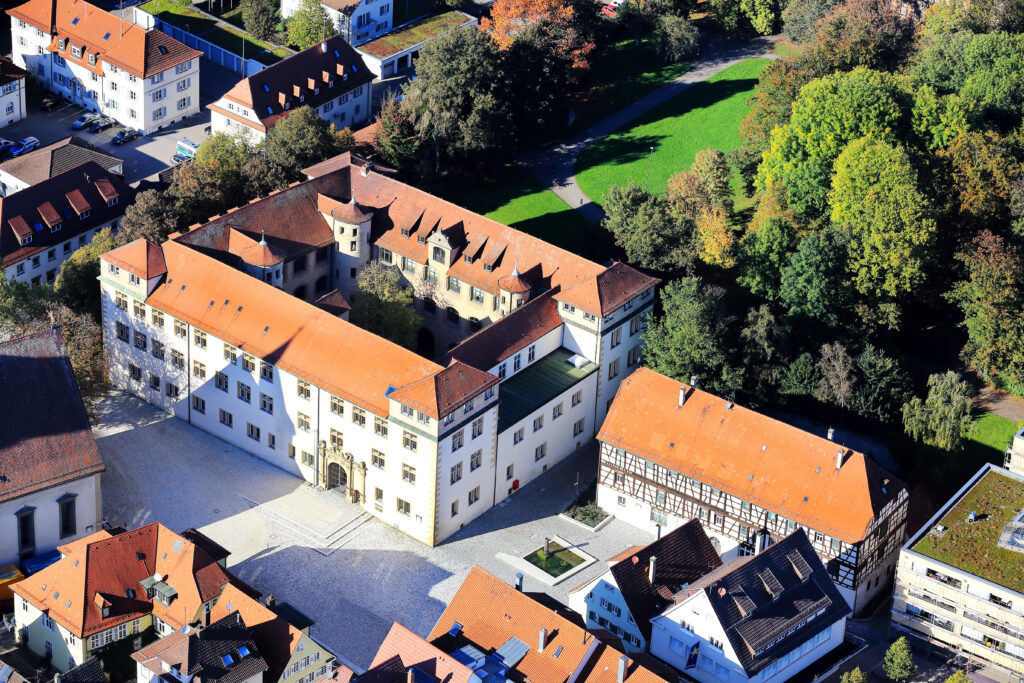Castle
Göppingen belonged to Württemberg. Thus, the respective Duke of Württemberg was also the supreme city lord, which clarifies why numerous rulers from the House of Württemberg stayed in Göppingen for shorter or longer periods.
Duke Christoph, in particular, had a close relationship with our city. He often stayed here for treatment and sought relief for his physical ailments in the local mineral water. The Christophsbad still bears his name to this day. In order to have suitable accommodation in Göppingen, he commissioned the construction of the still-existing castle. We know almost nothing about the medieval predecessor structure, which stood at the same location in the northwest corner of the old town and is documented in the 15th century, The Renaissance castle of Duke Christoph completely overlaid the old fortress.
The castle was built between 1556 and 1565. The duke’s court architect Aberlin Tretsch from Stuttgart was responsible for the construction. This also explains the similarity of the Göppingen castle to the Old Castle in Stuttgart, where Tretsch also worked. In Göppingen, it is a simple, four-winged structure with corner towers in the Renaissance style. The magnificent building is accessed through a large gate, which served as the entrance for carriages and a small gate for pedestrians. The wall pillars are adorned with rich, sculptural decoration, in the form of cornucopias, mermaids, angelic beings, and flower cups. Above them are figuratively crafted, intertwined dragons. The crowning glory is three coat of arms-bearing lions. On the far right is the ducal coat of arms with the year 1559 and two deer, the heraldic animals of Württemberg.

The Göppingen castle, from an art and architectural perspective, is an early example of the four-winged Renaissance castle buildings that replaced medieval fortresses and were entirely focused on representation and residential comfort.
From the castle courtyard, one enters the interior of the magnificent building through three round towers. The tower entrance in the southwest corner is adorned with the alliance coat of arms of Duke Christoph and his consort Anna Maria, Margravine of Brandenburg, from the year 1562. Behind it, the “Vine Staircase” has high-quality stonemasonry work in late Gothic style on its underside: a vine climbs up, in whose flower and tendrils 13 animal and human figures are incorporated – a masterpiece by Göppingen stonemason Hans Neu.
In the 18th century, two women from the House of Württemberg lived in the castle: Maria Henriette, widow of the Crown Prince Friedrich Ludwig of Württemberg (resident in Göppingen since 1734) and Maria Augusta of Thurn und Taxis, widow of Duke Karl Alexander of Württemberg (1750-1756 under house arrest in Göppingen Castle). In the summer of 1815, Katharina of Württemberg, who was married to Jérôme Bonaparte, Napoleon’s brother, stayed in the castle for several weeks before the two had to visit further exile locations.
Today, the castle houses judicial authorities of the state of Baden-Württemberg.

